It always starts with the same question:
“Should I go with awning or casement windows?”
It seems simple. But once you think about how the space will actually be used how the window opens, how much air you want, how close the walls are it gets more confusing.
I’ve seen it happen plenty of times. Someone picks the wrong style, and later they realize it blocks a walkway or doesn’t let in enough breeze. And by then, it’s already installed.
I’ve been working with windows for a while now. And I’ve learned it’s not just about what looks good it’s about how the window works in real life.
This guide will walk you through the difference between awning and casement windows. I’ll share what I’ve seen go right, what can go wrong, and what details really matter.
By the time you finish reading, you’ll feel confident choosing the one that fits your space best.
Let’s dive in!
Quick Comparison Overview
Sometimes it’s easier to see everything side by side. If you’re still unsure which one suits your space, here’s a quick snapshot to help guide your thinking before we dig deeper.
| Category | Awning Window | Casement Window |
| Opening Direction | Hinged at the top, opens outward from the bottom | Hinged at the side, swings outward like a door |
| Best For | Small or narrow spaces, high-wall placement | Larger rooms needing strong ventilation and full views |
| Ventilation | Moderate airflow, softer breeze | Strong airflow, supports cross-ventilation |
| Weather Handling | Can stay open during light rain | Seals tightly for wind and heavy rain |
| Security | Basic locking (1–2 latches) | Multi-point locking, better for safety-sensitive areas |
| Cleaning Access | Harder to reach if installed high | Easier to clean inside and out |
| Screen Mounting | Inside frame, design may vary | Inside frame, usually simple to access |
| Seal Quality | Good seal if installed well | Tighter compression seal, strong against drafts |
| Outdoor Clearance | Takes up less space outward | Needs full swing clearance |
| Design Flexibility | Often paired above other windows | Stands alone or in large layouts |
Now that you’ve seen the quick overview, let’s take a closer look at how each window works in real spaces.
1. What Is an Awning Window?
An awning window opens outward from the bottom with a hinge at the top, forming a small roof when open. It’s usually operated with a crank and often placed high on walls or above doors ideal for bathrooms, kitchens, or narrow spaces. It allows airflow while keeping rain out, which makes it useful in humid areas.
That said, placement matters. If it’s too high or hard to reach, it may be less practical. Some spaces need stronger airflow than an awning can provide. Before choosing one, think about how you’ll use the room not just how the window looks.
2. What Is a Casement Window?
A casement window opens outward from the side on vertical hinges and operates with a crank, swinging open like a door. It’s popular in living rooms, bedrooms, and other areas where wide views and strong airflow are needed. Since the full glass panel opens, it brings in more fresh air and natural light especially helpful in larger rooms.
But it needs space to work well. If installed near patios or walkways, the sash might block movement or bump into furniture. Always consider how far the window will open and what’s nearby before choosing this style.

3. Functionality in Different Weather Conditions
Choosing between awning and casement windows goes beyond design. How each window handles wind, rain, or temperature changes can affect long-term comfort and performance. This is especially important for buildings that experience weather extremes or require good ventilation without risking water intrusion.
Here’s how both styles perform across common climate conditions.
Awning Window
- Rain: When open, the sash forms a downward angle that helps block light rain from entering. Ventilation remains possible without fully exposing the interior.
- Wind: In areas with strong upward or side winds, the outward-opening sash can catch gusts if not properly supported. Hardware must be carefully selected during planning.
- Heat or Cold: Awning windows can be built with insulated frames and glass, but the sealing system may not offer the same tightness as compression-sealed designs. This could allow more air movement during extreme temperatures.
Casement Window
- Rain: Since casement windows open from the side, the interior is more exposed if left open during rain. Side-driven rain can enter unless the unit is closed securely.
- Wind: The sash presses directly into the frame when closed, forming a strong seal that holds up well in windy conditions. This helps reduce drafts and outdoor noise.
- Heat or Cold: Casement windows typically offer better performance in extreme temperatures. The tighter seal helps maintain stable interior conditions in both hot and cold climates.
Final Verdict
For buildings located in rainy climates or where upper-wall ventilation is needed, awning windows offer a safe way to allow airflow during light weather. However, casement windows are a stronger option for spaces that require better insulation, wind resistance, or airtight sealing especially in guest rooms, villas, or glass-heavy builds where comfort matters year-round.
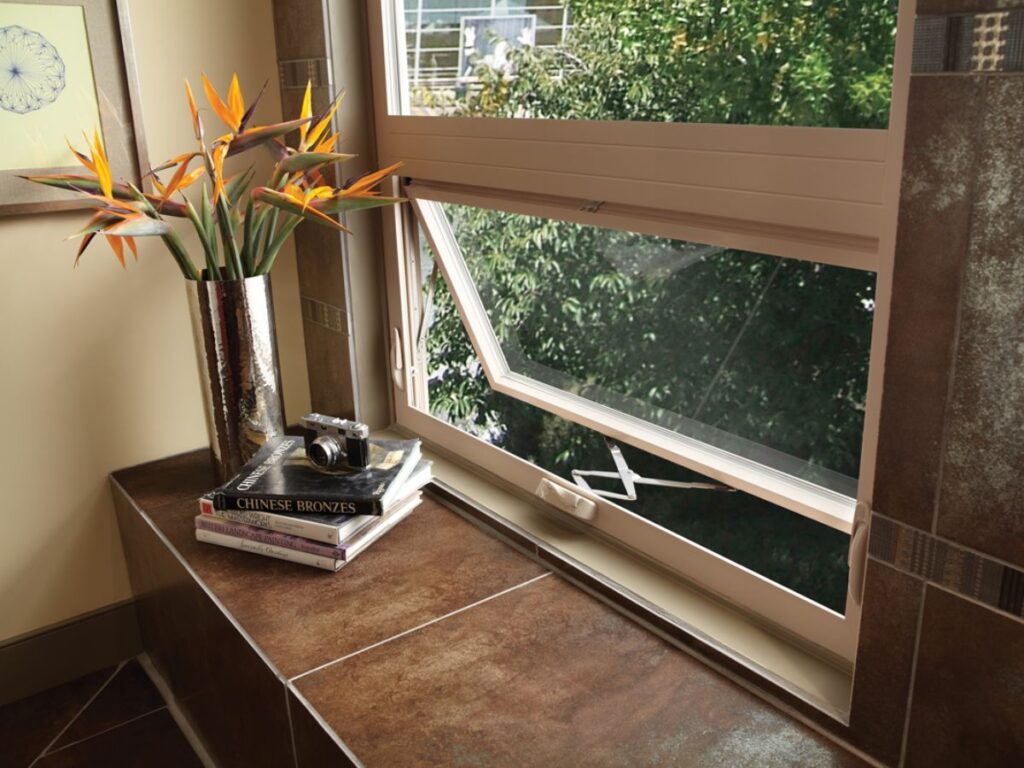
4. Ventilation and Air Control
Window design affects more than appearance . It shapes how air flows through space. A window that limits ventilation can make rooms feel warm or stale, even if it looks good on paper. This is especially important for guest-facing spaces, kitchens, or areas that rely on passive airflow to stay comfortable.
Let’s compare how each window style performs when it comes to airflow and directional control.
Casement Window
- Airflow Efficiency: Casement windows open fully, allowing the entire sash to function as a ventilation channel. When angled toward a breeze, they draw in fresh air efficiently and support strong cross-ventilation between opposite openings.
- Directional Control: The side-hinged design makes it possible to direct air into the room, depending on where the wind is coming from. This helps cool down larger spaces more effectively without the need for mechanical ventilation.
Awning Window
- Airflow Efficiency: Awning windows provide moderate airflow. They don’t open as wide, which limits the total volume of air that can enter. However, they perform well in compact spaces where only a small amount of air movement is needed.
- Directional Control: Since the sash opens from the bottom, air flows in at an upward or downward angle. This allows gentle circulation without sending direct drafts across seating areas or workspaces.
Final Verdict
Casement windows are better suited for large rooms, villas, or guest areas that need strong, targeted airflow and cross-ventilation. However, awning windows offer a controlled and gentle breeze for compact rooms like kitchens, bathrooms, or hallways where space is limited but fresh air is still important.
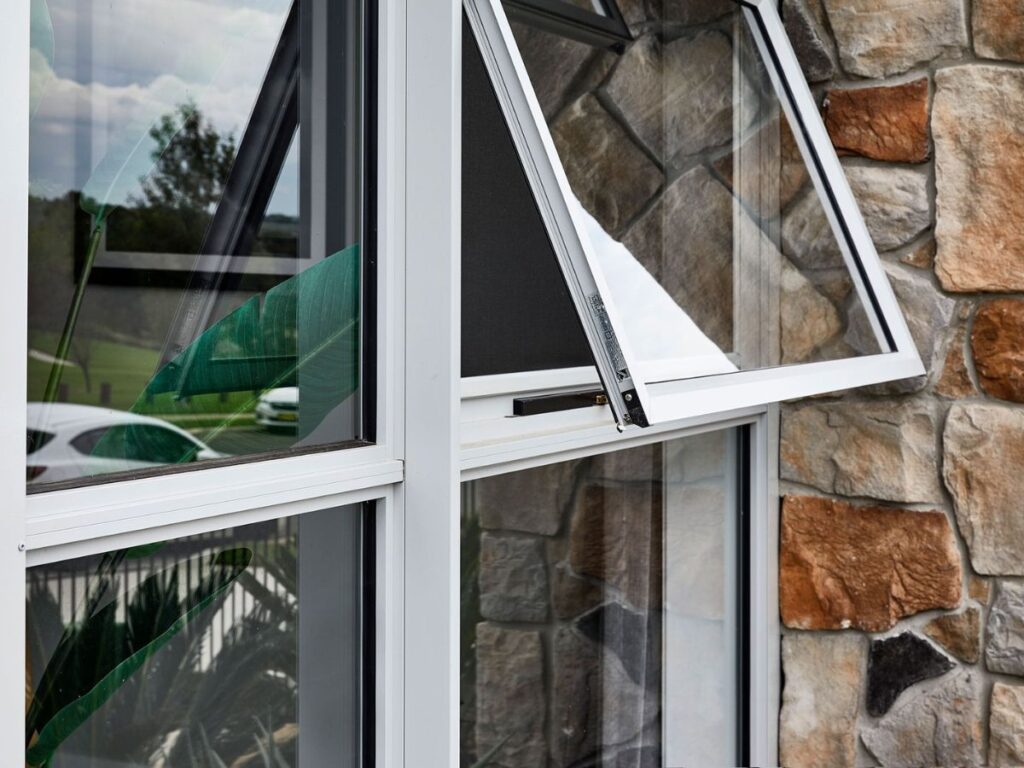
5. Applications and Placement Ideas
Window choice is closely tied to how a space functions. A design might look great on paper, but if it interferes with furniture, lighting, or airflow, it becomes a long-term frustration. Placement impacts everything: how well the window works, how people move through the room, and how the space feels throughout the day.
Here’s how awning and casement windows compare in real placements.
Awning Window
- Application: Often used in tight spaces or above eye level where a full swing-out isn’t possible. Suitable for rooms that benefit from airflow without needing full ventilation.
Placement:
- High on walls for passive ventilation
- Above large fixed windows to allow airflow without blocking views
- In bathrooms or laundry rooms where moisture is a concern
- Inside narrow kitchens or small passageways
Awning windows allow limited but steady airflow. Because they open from the bottom and angle outward, they don’t interfere with cabinets or nearby furniture. One residential layout included awning windows above full-height glass walls, allowing cross-ventilation without altering the open feel of the space.
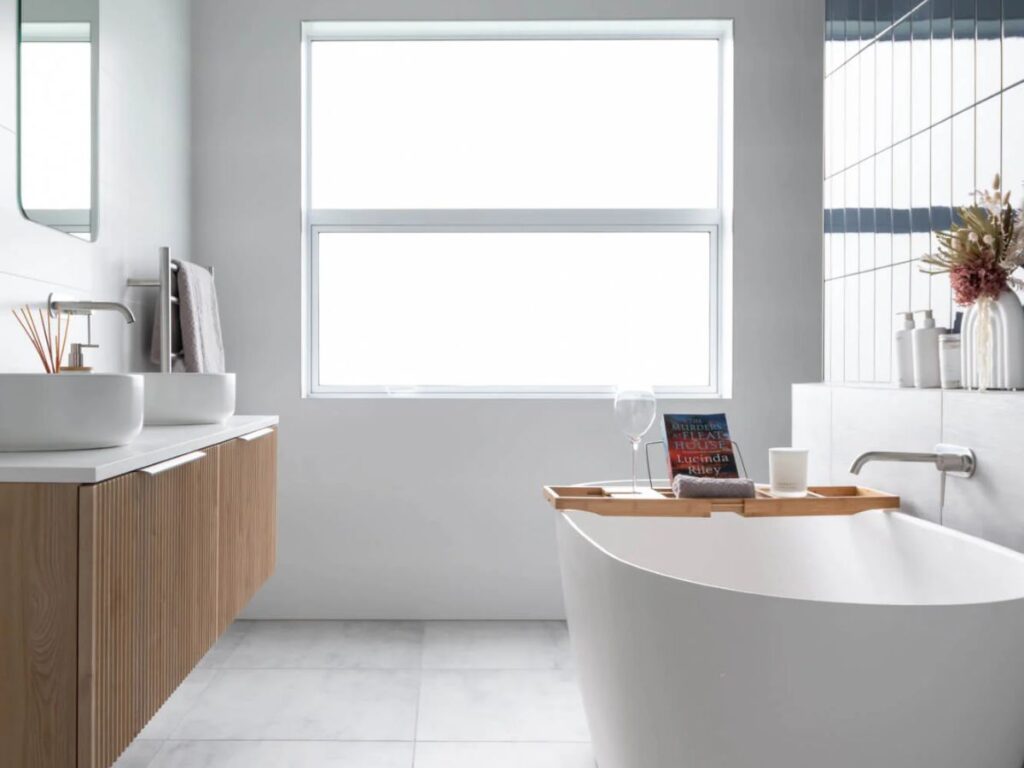
Casement Window
- Application: Best for full ventilation and wide outdoor views. Common in rooms used for relaxing, sleeping, or entertaining where air movement and comfort are essential.
Placement:
- Primary bedrooms for strong airflow
- Dining and lounge areas for uninterrupted views
- Building corners to support natural cross-breeze
- Anywhere a full swing-out opening won’t interfere with pathways
Casement windows open fully and work well in larger spaces. They often replace sliders or double-hung windows when airflow is a priority. In a hospitality project, casements improved both guest comfort and passive cooling in suites facing landscaped courtyards.
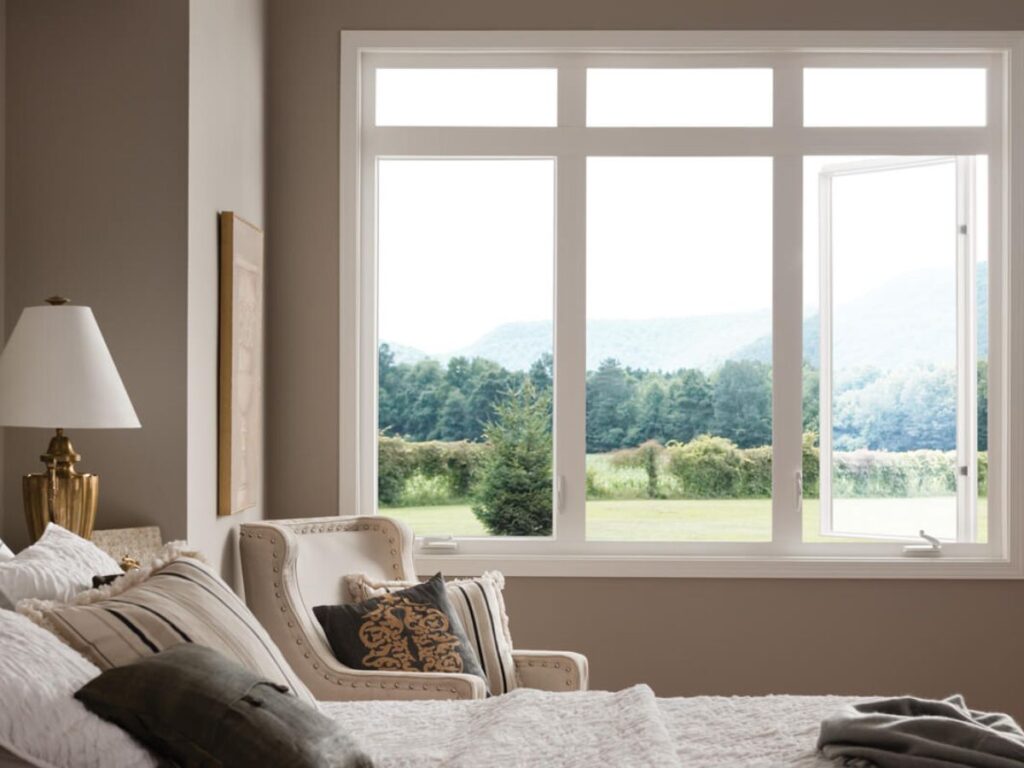
Using Both Window Types Together
Some projects benefit from combining awning and casement windows. This approach gives both controlled ventilation and full opening access without sacrificing wall space.
- Greenhouses often combine upper awnings with lower casements for airflow layering
- Home offices use top-mounted awning vents to reduce heat buildup while keeping views clear
- Bathrooms with fixed panels sometimes add small awnings up high to release humidity
Final Verdict
Awning windows work best in narrow, damp, or elevated spaces where steady airflow is needed without blocking movement or views. Casement windows are ideal for large, open rooms that benefit from full ventilation and clear sightlines.
In some designs, using both styles together solves multiple challenges at once without crowding the space. Vallisco supports both approaches supplying complete systems that match real usage, not just architectural drawings.
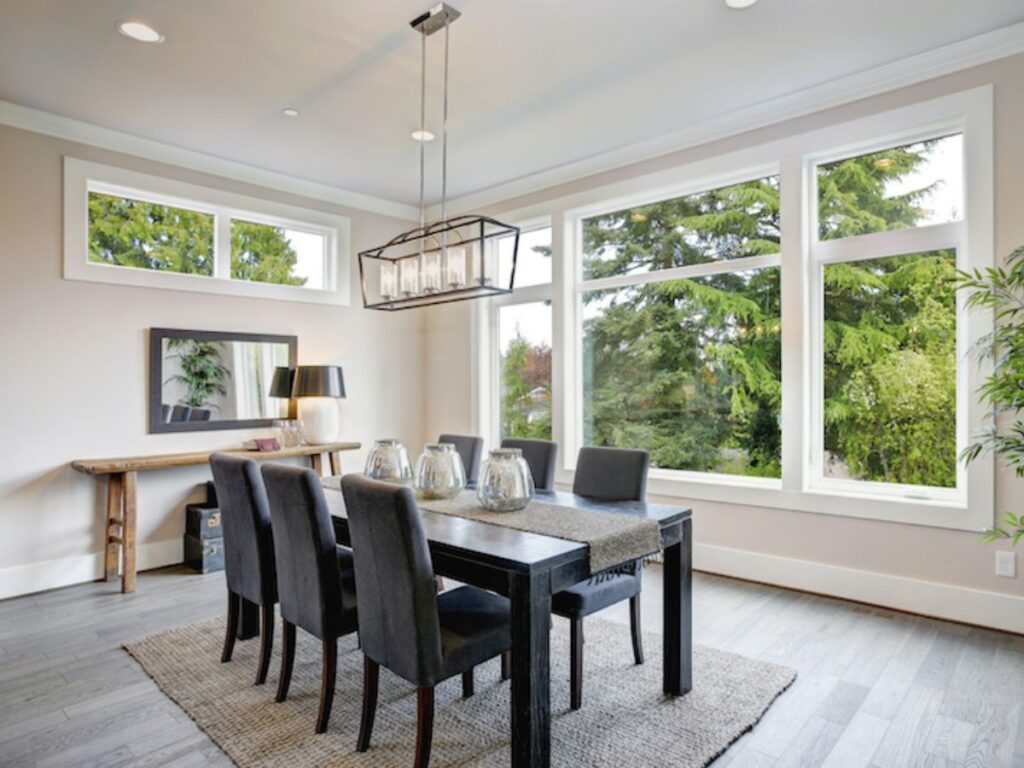
6. Window Maintenance and Care Tips
Maintenance isn’t the most exciting part of window planning but it often becomes the most important. A few simple tasks each year can prevent long-term problems like sticking sashes or failed hardware. This is especially true for properties with frequent use, such as B&Bs, villas, and guest suites.
Let’s look at what to expect from both window types when it comes to upkeep and long-term care.
Casement Window
- Cleaning Ease: Casement windows swing outward from the side, which makes them easier to clean from indoors. The full opening allows access to both sides of the glass, even on upper floors or during poor weather.
- Hardware Care: Hinges and cranks may become stiff over time, especially if the window is opened and closed often. Light lubrication during seasonal checkups can help prevent wear.
- Durability Factors: Casement frames are available in uPVC, aluminum, and wood. uPVC requires the least care, while wood frames may need sanding or repainting to avoid swelling or decay.
Awning Window
- Cleaning Ease: Cleaning awning windows can be more challenging, especially if they’re installed high on the wall or above sinks and bathtubs. In those cases, a step ladder or extension tool may be needed.
- Hardware Care: Like casements, awning windows use cranks and hinges. These should be checked regularly for stiffness or misalignment to keep operation smooth.
- Durability Factors: The material matters just as much. Aluminum offers strength and weather resistance. Wood needs more attention, especially in damp rooms like bathrooms or kitchens.
Final Verdict
Casement windows are easier to clean and maintain, making them a better fit for properties with upper floors or limited access. Awning windows still perform well with regular checks just expect to plan ahead if they’re placed high or in harder-to-reach areas. For any window type, adding a maintenance check to your seasonal routine keeps everything working smoothly long term.
7. Security and Sealing Performance
Security and sealing play a key role in guest comfort and energy control. Whether you’re managing a rental unit, hotel suite, or greenhouse structure, window design can directly affect privacy, temperature stability, and even noise levels.
Here’s how awning and casement windows compare when it comes to locking strength, airtight sealing, and screen use.
Casement Window
- Locking Systems: Casement windows often use multi-point locks that secure the sash in more than one location. This setup makes them harder to pry open from the outside and a reliable choice for spaces that face public areas or require extra privacy.
- Airtight Sealing: These windows close tightly using compression seals that press into the frame. This reduces noise, blocks drafts, and prevents moisture from getting in, especially useful in colder climates or busy urban locations.
- Screen Compatibility: Insect screens are typically installed on the inside of the window frame. This allows airflow while keeping insects out and makes the screen easy to remove or clean when needed.
Awning Window
- Locking Systems: Awning windows usually rely on one or two latch locks. For smaller units, this may be enough. However, larger or lower-level windows may need additional reinforcement depending on where they’re installed.
- Airtight Sealing: With proper construction and installation, awning windows seal well. Over time, exposure to wind or rain may cause some wear, so regular inspection is important to maintain weather protection.
- Screen Compatibility: Screens are also mounted inside the frame but may vary slightly in design. A snug, fitted screen keeps bugs out while still allowing airflow from below.
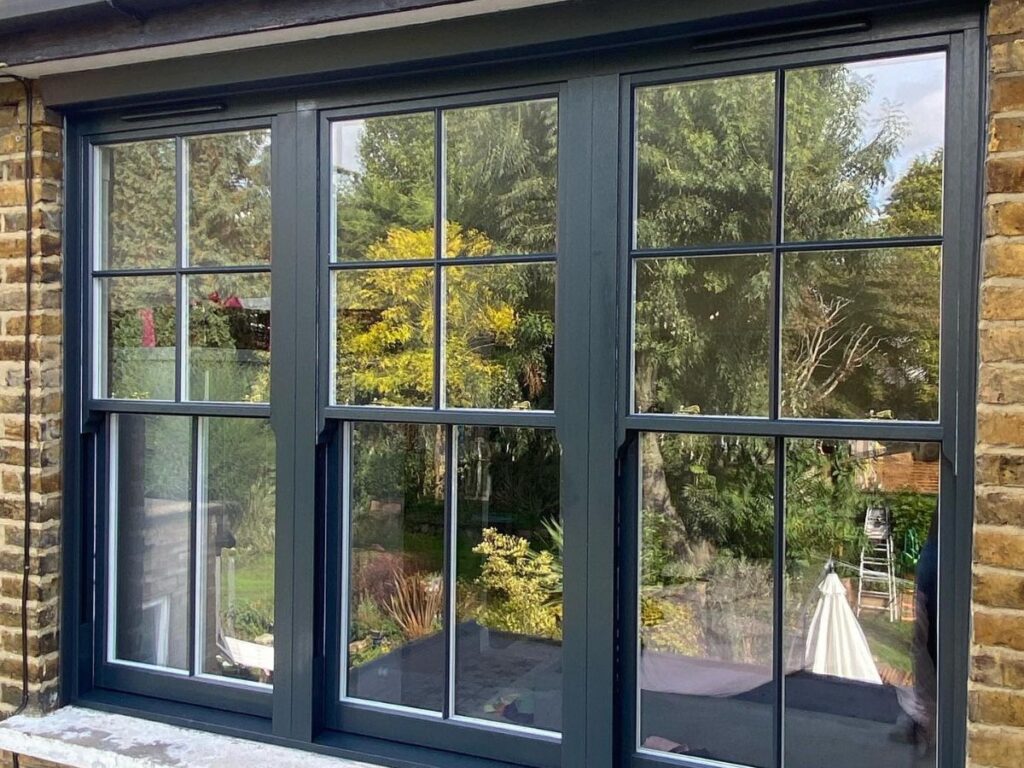
Final Verdict
Casement windows offer stronger locks and tighter seals, making them a solid option for rooms that face outdoor traffic, noise, or changing weather. Awning windows perform well, especially in smaller or elevated spaces, but they may need extra attention in lock placement and seal maintenance.
At Vallisco, we’ve seen both styles used effectively across hotel rooms, villas, and greenhouses where the right seal and locking system directly impact guest satisfaction. For either style, regular inspection and proper screen fitting help keep indoor spaces secure and comfortable.
8. How to Choose Between Awning and Casement Windows
By now, you’ve seen that both awning and casement windows have their place. But making the right choice still depends on what your space actually needs. Different rooms call for different solutions. What works perfectly in a kitchen may not work as well in a bedroom or greenhouse.
Here are some key factors that can help you decide with more confidence.
Space Availability
Start by looking at how much clearance is available outside the wall. Casement windows need more swing room since they open sideways. In open areas like gardens or patios, that’s usually not a problem. But in tight spots such as narrow alleys or walkways, awning windows often make more sense. They open upward and outward, staying clear of most outdoor obstructions.
Desired Airflow
Next, think about how much air you want moving through the room. Casement windows allow full opening, which pulls in strong cross-ventilation. This is helpful in warm climates or large rooms. Awning windows provide lighter airflow, which can be ideal for smaller or enclosed spaces where a steady breeze is enough.
Weather Exposure
If the wall faces wind or rain regularly, casement windows generally hold up better. Their compression seal creates a tight close when shut. Awning windows can still be useful in light rain, since the sash acts like a small shield, but they may need added support if your site is exposed to strong gusts.
Cleaning Access
Cleaning might not be top of mind now, but it matters later. Casement windows swing wide, letting you reach both sides of the glass from inside in most cases. That’s useful in multi-story properties or during bad weather. Awning windows are harder to clean if they’re placed high or above fixtures like sinks or tubs.
Security Concerns
If the window is on a lower level or faces a public area, security becomes more important. Casement windows usually come with multi-point locks, making them harder to open from outside. Awning windows often use one or two latch points, which are fine for small openings but may need reinforcement in more vulnerable locations.
Conclusion
Choosing between awning and casement windows isn’t just about specs. It’s about solving real problems ventilation, comfort, and safety. Now you’ve got the knowledge to do that.
You’ve seen how airflow, placement, sealing, and function all play a role. The right choice depends on what your space needs, not just what looks good. I’ve worked with teams who realized this only after installation. You don’t have to make that same mistake.
So, which one fits your space better up high for moisture control, or wide open for a breeze?
Need help making that call?
Contact Vallisco today. Let’s build something that actually works.
More Guides and Tips to Explore
For more helpful content, explore our collection of recommended reads:
Still haven’t found what you’re looking for? Don’t hesitate to contact us. We’re available around the clock to assist you.







